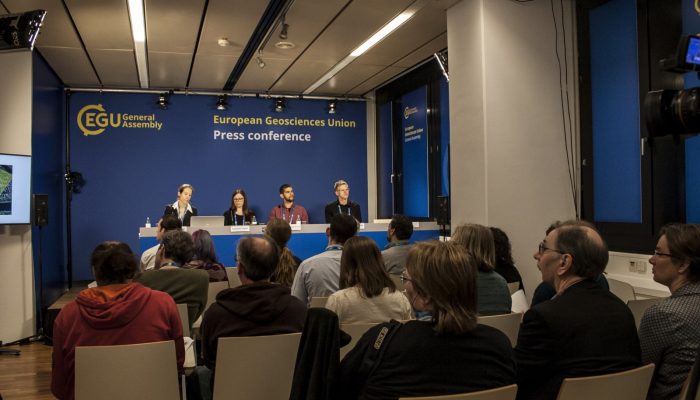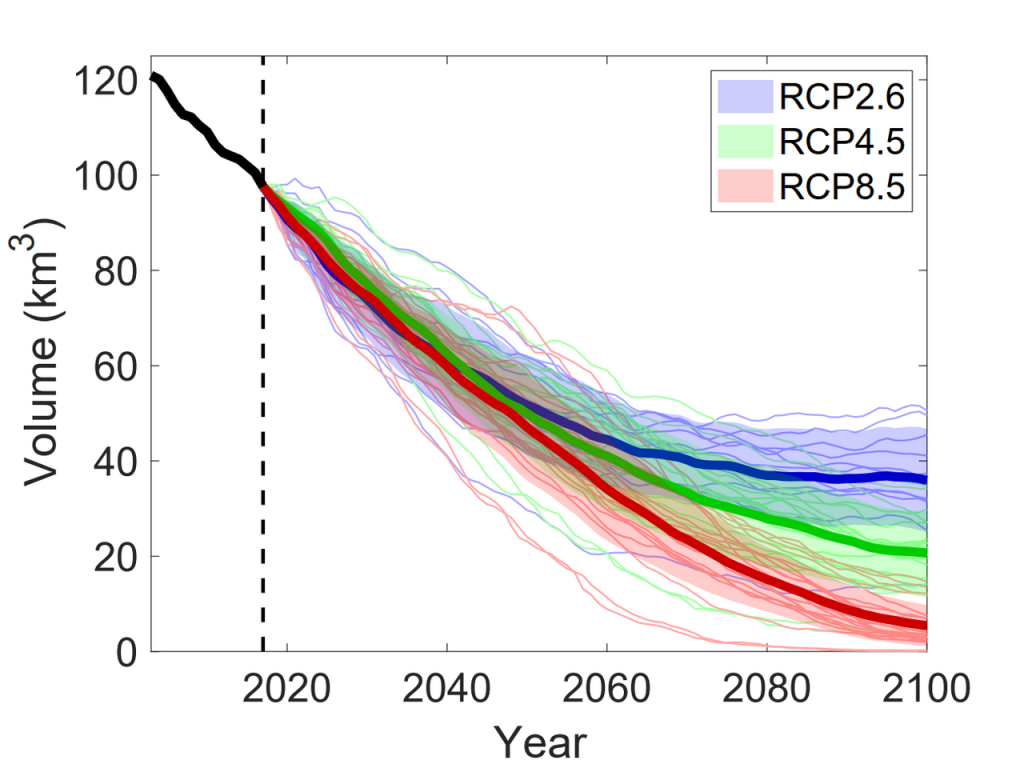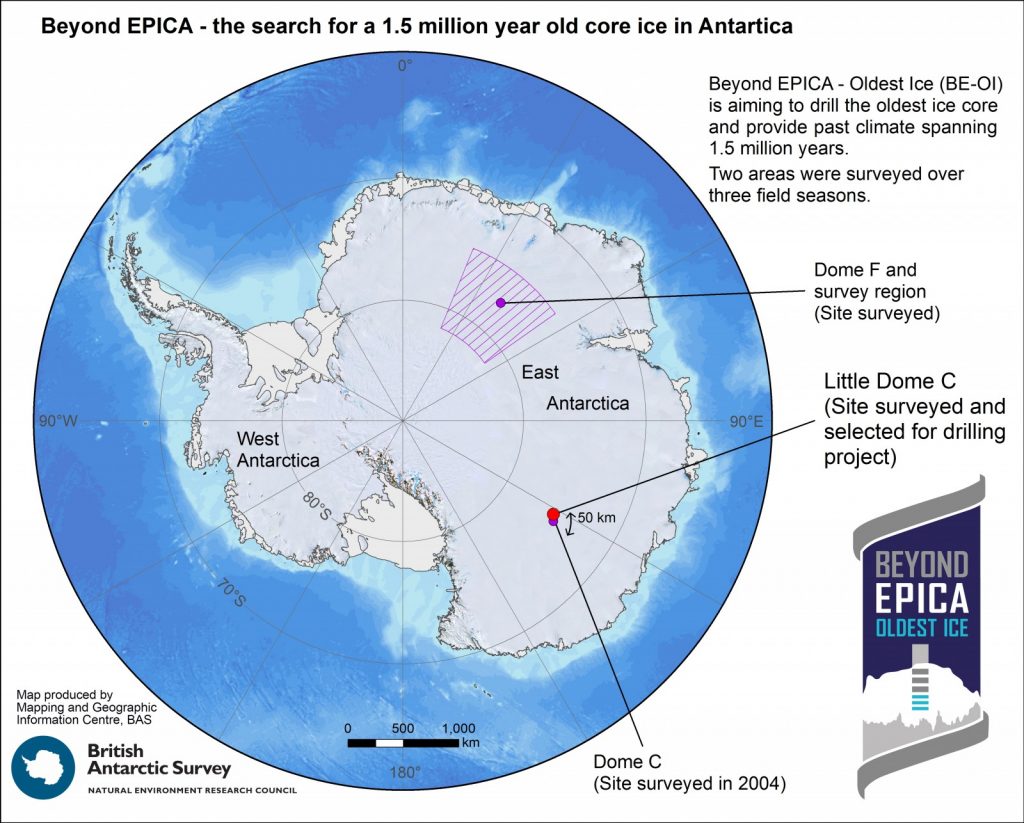
The EGU General Assembly 2019 took place in Vienna last month, drawing more than 16,000 participants from 113 countries. This month’s GeoRoundUp will focus on some of the unique and interesting stories that came out of research presented at the Assembly!
Major Stories
Glacial disappearing act in the European Alps
New research from a team of scientists estimated the future of all glaciers within the European Alps, and the results aren’t that hopeful. After running new simulations and analysing observational data, the researchers predict that, if we limit global warming below 2°C above pre-industrial levels, by 2100 glacier volume in the Alps would be roughly two-thirds less than levels seen today.
Furthermore, according to the new research, if we fail to put global warming in check, more than 90 percent of Europe’s glacier volume in the Alps will disappear by the end of the century. “In this pessimistic case, the Alps will be mostly ice free by 2100, with only isolated ice patches remaining at high elevation, representing 5 percent or less of the present-day ice volume,” says Matthias Huss, a researcher at ETH Zurich and co-author of the study.

Evolution of total glacier volume in the European Alps between 2003 and 2100. Credit: Zekollari et al., 2019, The Cryosphere.
The data also suggests that from now until 2050, about 50 percent of the present glacier volume will melt, regardless of how much greenhouse gas emissions we produce in the coming years. This is because glaciers are slow to respond to changes in climate conditions, and still reflect colder climates from the past. In addition to presenting their research at the EGU General Assembly, the team also published the results in The Cryosphere.
The search for the oldest ice announces their drill site
After three years of careful consideration, a collection of European ice and climate researchers have pinpointed the spot where they would most likely uncover the oldest ice core possible, one that dates back to 1.5 million years from today.
The consortium of researchers, also known as the Beyond-EPICA project, hopes to pull out a sample of ice containing a seamless record of Earth’s climate history. Such ice samples contain trapped air bubbles, some sealed off thousands to millions of years ago, thus providing undisturbed snapshots into Earth’s ancient atmospheres. Using this climate data, researchers can make predictions on how Earth’s will warm in the future.
At the General Assembly, the scientists formally announced that the drilling operation will be conducted 40 kilometres southwest from the Dome Concordia Station, which is run jointly by France and Italy. The team plans to collect a three km-long ice core from the site, nicknamed ‘Little Dome C,’ over the course of five years, then will spend at least an additional year examining the ice.

Map of Antarctica showing the areas surveyed by BE-OI and the selected drill site (Credit: British Antarctic Survey (BAS))
What you might have missed
Predicting the largest quakes on Earth
Scientists have long discussed how intense quakes can be on Earth, with some studies suggesting that Earth’s tectonic features cannot generate earthquakes larger than magnitude 10. However, new research conducted by Álvaro González Center from Mathematical Research in Barcelona, Spain estimates that subduction zones, regions where one tectonic plate is pushed under another, subsequently sinking into the mantle, have the potential to release 10.4 magnitude earthquakes. González’ analysis suggests that such events happen on average every 2,000 years.
“Such events would produce especially large tsunamis and long lasting shaking which would effect distant locations,” Gonzalez said to the Agence France-Presse.
His findings also propose that large asteroid impacts, such as the dinosaur-killing Chicxulub event 66 million years ago, may trigger even larger magnitude shaking. According to data analysis, shaking events reaching magnitude 10.5 or more likely happen on average once every 10 million years.
Where deadly heat will hit the hardest
Heatwaves and heat-related hazards are expected to be more prevalent and more severe as the Earth warms, and a team of researchers looked into which regions of the world will be the most vulnerable.
The scientists specifically analysed human exposure to ‘deadly heat,’ where temperatures as so high that humans aren’t able to cool down anymore. By examining data projections for future population growth and annual days of deadly heat, the researchers assessed which areas will be hit the hardest. They found that, if global warming isn’t limited to 2°C above pre-industrial levels, there will be a few ‘hots spots,’ where large populations are predicted to experience frequent days of deadly heat annually.

Dhaka, Bangladesh, is expected to experience significant exposure to deadly heat in the future, according to research presented at the EGU 2019 meeting. Credit: mariusz kluzniak via Flickr
The research results suggest that future deadly heat will most significantly impact the entire South Asia and South-East Asia region, Western Africa and the Caribbean. Sub-Saharan Africa in particular will experience big increases in deadly heat exposure, due to climate change and population growth.
The researchers also found that a minority of large cities in very poor countries will be the most affected by future heat conditions. “There is a big inequality of who takes the toll of deadly heat,” said Steffen Lohrey, a PhD student at the Technical University Berlin who presented the findings at the EGU meeting.
Europe and the Mediterranean at risk of malaria due to climate change
While malaria was eradicated in Europe and the Mediterranean in the 20th century, there have been an increasing number of new cases in this region of the world, primarily due to international travel and immigration. New research presented at the General Assembly by Elke Hertig, a professor at the University of Augsburg, Germany, suggests that Europe’s future climate may further increase the risk of local malaria recurrence and expansion.
Malaria is transmitted to humans by Anopheles mosquitos and these disease-carrying insects are very sensitive to temperature and precipitation conditions. In particular, these mosquitos thrive in areas with warm spring temperatures and high precipitation in the summer and autumn.
Using climate models, Hertig found that the malaria-carrying mosquito population will likely spread northward as Europe’s climate changes, reaching much of northern Europe by the end of the century. Alternatively, her models suggest that mosquito populations will decline in the Mediterranean regions, mainly due to decreases in summer and autumn rainfall.
A statistical analysis also revealed that, by the end of the century, disease transmission from mosquitoes will be the most effective in southern and south-eastern European regions, including parts of Spain, southern France, Italy, Greece, and the Balkan countries.
Other noteworthy stories
- How do thunderstorms affect the Earth’s climate?
- Mars methane mystery plot thickens
- Glaciers contain radioactive isotopes from nuclear tests and accidents
- Mapping Vienna’s hidden depths
- Anak Krakatau: Collapsed volcano’s tsunami simulated
To stay abreast of all the EGU’s events and activities, from highlighting papers published in our open access journals to providing news relating to EGU’s scientific divisions and meetings, including the General Assembly, subscribe to receive our monthly newsletter.





